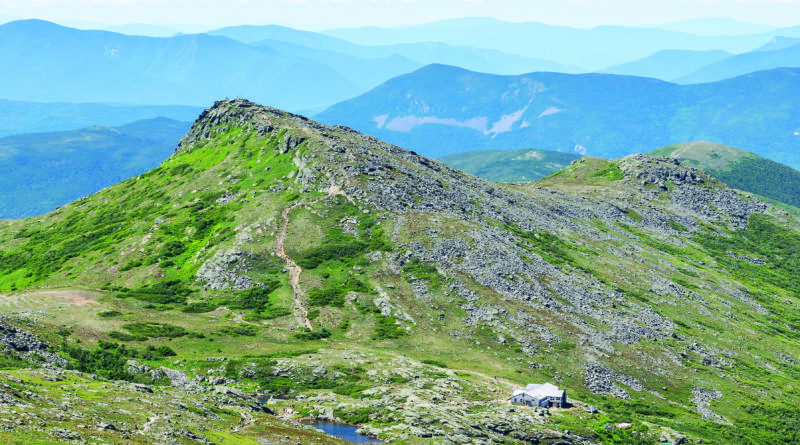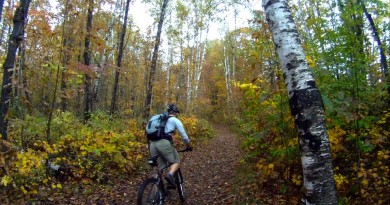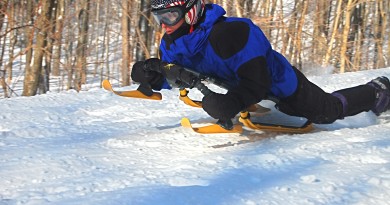Mastering the Presidential Traverse … at 18.
Though we were Vermonters by birth and upbringing, the Presidential Traverse, in the White Mountains of New Hampshire, had been calling for years.
By the age of 18, my friend Craig and I were ready. Our years of preparation required considerable discomfort (blisters, mosquitoes, nights camped in the rain). And not just ready: we were stoked, so frigging eager to thrash ourselves silly attempting New England’s premier backcountry endurance route—what Laura and Guy Waterman, in their classic Forest and Crag: A History of Hiking, Trail Blazing, and Adventure in the Northeast Mountains, describe as “a major test piece for ambitious hikers from the late nineteenth century to the present day.”
They were there for us: Seven summits taller than 4,000 feet, including Mount Washington (6,288 feet). Twentyish miles and 9,000 feet of vertical gain
Craig and I had put in plenty of big slogs together in the Green Mountains, but those involved a lot of deep forest and slippery black muck, whereas this objective promised something different, something unique: an entire lofty range, a continuous alpine ridge wending back and forth through the sky.
Some folks take it easy, chip away at the traverse over three or four days, relax in Appalachian Mountain Club huts (the route skirts three of them) where hot meals and a dry bunk can be purchased. Sounds nice—for them. Our plan was to begin before sunrise and end before sunset, to trudge and trudge. We’d travel above treeline, in the haywire footing of eternal talus and infinite ankle-busting schist! for hours and hours, totally exposed: a new and exciting prospect.
The goal wasn’t bragging rights or machismo, but increased self-confidence. Having recently received our high school diplomas, this burly rite-of-passage hike represented a parallel graduation ceremony—the culmination of four years spent rambling the woods, learning the wilderness and the art of moving around in it by trial and error.
However, there was a hurdle separating us from our initiation into mountain manhood: the pesky car shuttle. We’d leave Craig’s old Nissan at Crawford Notch, the southern terminus, but who would give us a lift to the northern tip of the range? I turned to my trusted logistical supervisor. Can you drop us at the Valley Way trailhead at, like, 4 a.m. next Tuesday? Please? We’ll do, like, yard work or whatever in exchange.
My mother, sweet lady, said “Sure.”
Surface winds clocked at 231 mph: check. Temperatures plunging to almost 50 below zero: check. More than 150 deaths (tourists, veteran mountaineers, the gamut) since record-keeping commenced in 1849: check.
Mount Washington—“home of the world’s worst weather,” according to meteorologists at the Mount Washington Observatory—is sketchy and then some, and its neighboring presidents (Madison, Adams, Jefferson, Monroe, Eisenhower, Pierce) comparably severe.
But there are synonyms for sketchy and severe that the thesaurus omits, such as raw, elemental, enlivening, awesome. Despite the hardships and dangers, or rather because of them, hordes of adventurers have been drawn to the Whites over centuries. I seriously doubt that Craig and I were the only boy-men whose bid for glory in the “Great Range” benefited from parental support.
That “Great Range” toponym was common parlance in September of 1882, when Eugene Cook and George Sargent claimed the first-ever blast-it-off-in-a-day traverse of the Presi (pronounced Prez-zee) ridgeline. Starting from the village of Randolph, their route spanned 24 miles and ascended 10,000 feet—impressive without Vibram soles and Camelbaks. But get this: After supper at the White Mountain House in Crawford Notch (presumably chased with a few hard ciders), the duo set out again, returning 18.5 miles to Randolph by road. For math dummies, that’s a casual 42-mile stroll, keep the change.
The Watermans label these fanatical pioneers and others of their kind “superhikers.” Indeed. By 1904, Herschel Parker and Warren Symonds had duplicated the traverse, tacking on an extra two peaks in the south, both of them trail-less: 22 hours, unimaginable krummholz bushwhacking. Not long afterward, the indefatigable Symonds executed a (brilliant? harebrained?) double traverse: the whole beast by lunch, u-turn, the whole beast in reverse by midnight.
These arduous origin stories reinforce a certain image of the Yankee wilderness buff: quiet, stoic, tough as nails, thrives on crappy conditions, adores soggy flannel and rotten wool. It’s an image that may be an overblown cliché, an accurate depiction, or a bit of each—an image that, regardless of its foundation (or lack thereof) in reality, sparks a fire in adolescent minds. The minds of two Vermont teens, in particular.
A groggy stumble. A black bear lumbering in soft pink light. A 4,000-foot climb—four miles, straight Stairmaster—to wash down a fistful-of-gorp breakfast. Dazed with fatigue by 10 a.m., mesmerized by the moonscape of lichen-splotched rock, Craig and I stupidly veered east at the saddle between Adams and Jefferson. Realizing too late that we were contouring around the desired summit, we opted to hand-over-hand a nasty pitch of jumbled blocks to regain the ridge, the aptly named Great Gulf (largest cirque in the range) nipping at our heels. Oh, what’s another 600 vert when you’ve got 6,000 yet to march? At least the sky was blue.
Since that fine outing fifteen years ago, I’ve orienteered and scrambled in Colorado, California, Wyoming, and British Columbia, and I’ve tagged peaks in New Zealand, Scotland, even a dinky bump (16,000 feet) in Nepal. The Presidential Traverse remains oddly vivid inside of me, though—it hasn’t been overshadowed or eclipsed. The reason, I suspect, is that the bulk of what I do in the mountains rests on it as a foundation. It taught me to respect and revere the alpine zone. It inspired me to ditch mapped trails and trace ridgelines instead. It showed me the potential of effort and the possibility of far.
Yes: far.
When, finally, we reached Craig’s old Nissan my shuttle-driving mom was long gone, a faint memory displaced by the thought of beer. Thanks to a generous, lawless sibling, we underage teens had a sixer of microbrew stashed in the trunk. Leaning against the hood, too tired to talk, perhaps unconvinced that there was anything in need of saying, we gazed at the inky trees, the pale washes of gray stone, the topography that had bruised the 104 bones (cumulative) in our poor, pathetic, ultimately proud feet.
Really, what could we say? Nothing had happened. Something had happened. The Presidential Traverse is absurd, a bridge to nowhere, a bridge to everywhere.
Right of passage.
Mom… beer.
It would be a lie to claim that a spine of earth wending through the sky had transformed us into men, had in one fell swoop initiated us into mountain manhood, but it would be equally untrue to imply that polishing off the first round, raising a toast with the second, we were still boys.
Vermont writer Leath Tonino is the author of two essay collections, most recently The West Will Swallow You (Trinity University Press, 2019). A version originally appeared in Adventure Journal.




